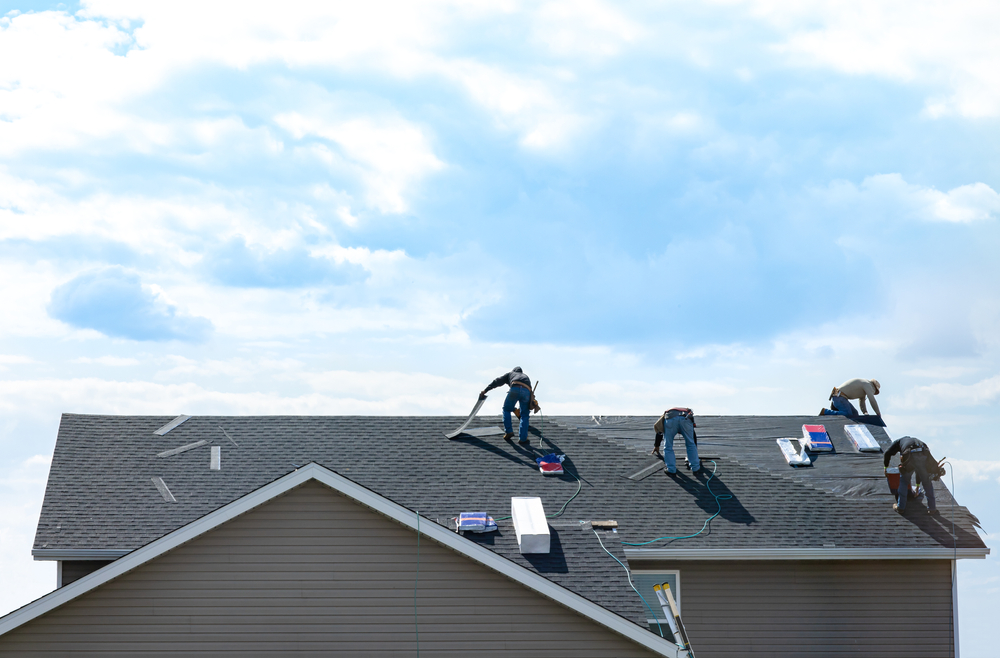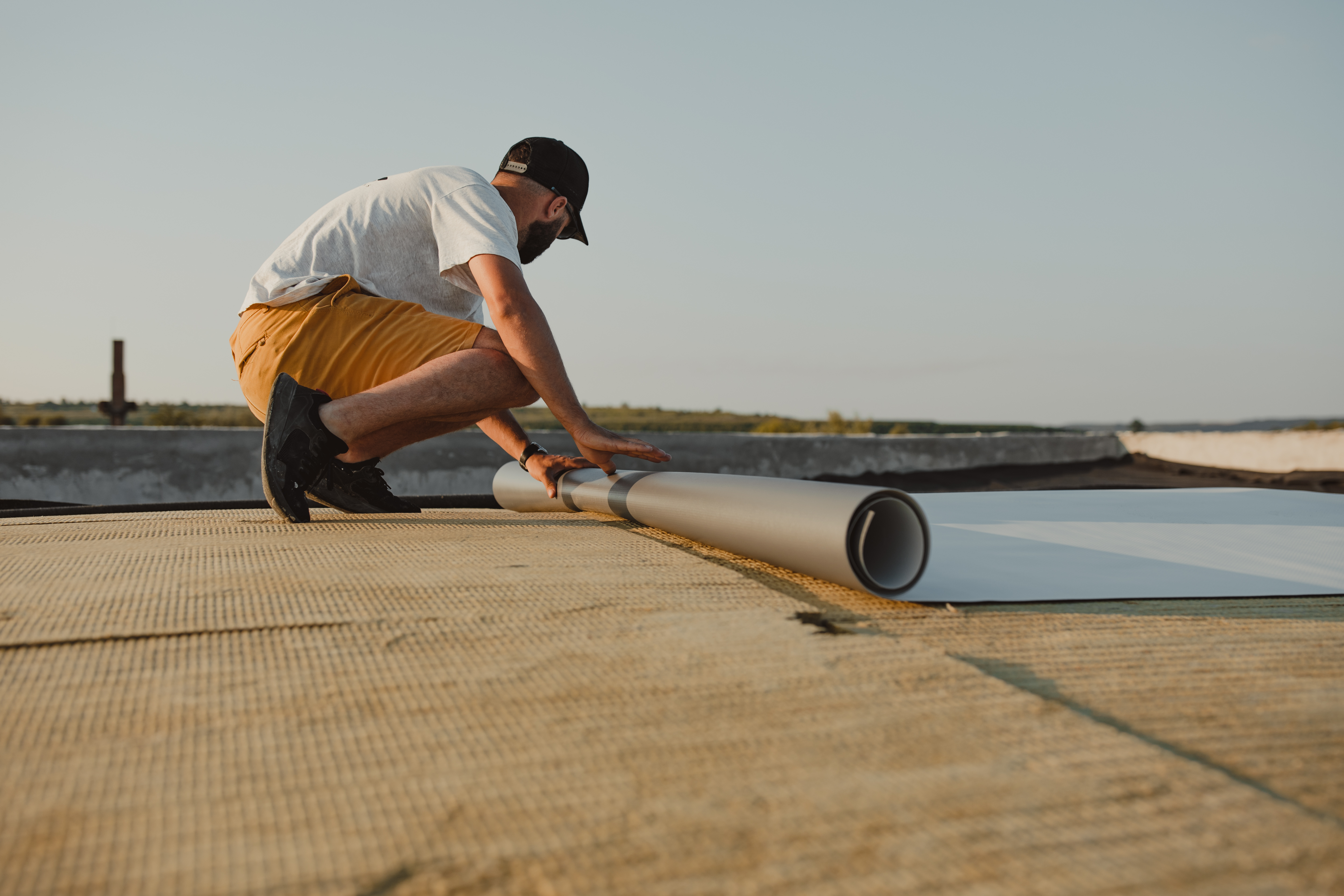TPO roofing is a type of single-ply membrane roofing system that has been gaining popularity in recent years, especially in commercial and industrial applications. TPO stands for “thermoplastic polyolefin,” which is a fancy way of saying that it’s a synthetic rubber compound that gets its strength from a reinforcement layer (usually polyester or fiberglass).
TPO roofing systems are usually white, which helps reflect sunlight and heat away from the building, resulting in lower cooling costs. They are also very lightweight, making them easy to install. And since they don’t require the use of any volatile organic compounds (VOCs) during installation, they are considered to be very “green” and environmentally friendly.
TPO roofing systems have advantages over other single-ply membrane roofs, such as PVC (polyvinyl chloride) and EPDM (ethylene propylene diene terpolymer). For one thing, TPO is less likely to develop wrinkles or creases over time, leading to leaks. TPO is also more resistant to ultraviolet (UV) radiation, so it doesn’t break down as quickly as other materials when exposed to sunlight.
What is TPO Roofing Membrane?
Thermoplastic polyolefin, sometimes known as TPO, is a single-ply roofing material that reflects heat and conserves energy. TPO roofing is a more general term for materials known as “rubber roofing.” Rubber and other materials (fillers) are mixed with increasing flexibility and toughness. TPO roofs (for both commercial and residential roofing) are rapidly expanding.
TPO roofing was introduced in the 1990s as a more affordable replacement for PVC roofing. Due to its excellent performance as a flat roof system during the past few decades, TPO has gained popularity. However, TPO is primarily marketed as an EPDM and PVC substitute that is more energy-efficient. And as consumers seek more energy-efficient roofing, TPO is becoming more and more popular.
However, if you can view the roof from a window, you should consider how the white TPO roofing membrane will appear. White will become dirtier much more quickly if the window faces the membrane. It doesn’t matter whether you can’t see the roof at all or don’t care about how it looks. So keep that in mind while you make decisions.
Why Do You Need TPO Roofing?
It would help if you understood the benefits of TPO roofing after realizing what it is. A roof or roof facet is considered to have a low slope if its pitch, also known as steepness, is less than 2:12 (less than two vertical units up for every 12 horizontal units out). It must be waterproof since water won’t drain off a low slope or flat roof as quickly as from a more steep pitch. Because they are not designed to hold standing water, asphalt shingles are not an option.
This is required by construction codes, not just something roofers came up with one day. Asphalt shingles cannot be installed on a roof with a pitch lower than 2:12 by both the installation guidelines provided by the shingle manufacturer and building regulations. For this reason, it is necessary to install a TPO roofing membrane (or another flat roof system) on low slopes or flat roofs. Never select a roofing contractor that even suggests shingling a low-slope roof.
However, you need to consider the look of TPO’s white membrane if you can see the roof from a window. If the window looks over the membrane, white will get dirtier quicker. If you don’t care about the look or can’t see the roof at all, it’s not a big deal. It’s just something to remember when going through the decision-making process.
How Does TPO Compare With Other Commercial Roofing Systems?
TPO has many advantages over other TPO commercial roofing systems. Here are some key benefits:
Temperature resistance: TPO can withstand extreme heat and cold without breaking down, making it ideal for use in all climates.
UV resistance: TPO is highly resistant to UV rays, meaning it won’t break down or degrade when sunlight exposes it. This makes it an excellent choice for flat roofs exposed to direct sunlight.
Flexibility: TPO is a flexible material that can expand and contract without cracking or breaking. This makes it ideal for use on roofs that experience temperature fluctuations.
Seam strength: TPO roofs are heat-welded at the seams, creating a watertight seal more robust than the material. This makes them highly resistant to leaks.
Ease of installation: TPO can be installed quickly and efficiently, which minimizes disruptions to your business.
Cost-effectiveness: TPO is one of the most cost-effective roofing materials on the market, making it an excellent choice for budget-conscious business owners. TPO also has some disadvantages, but they are not as significant as the benefits. Here are a few things to keep in mind:
Color: TPO is only available in white, so it may not be the best choice if you are looking for a roof that will complement the aesthetics of your business.
Noise: TPO can be noisy when it expands and contracts in extreme temperatures. This is not a significant concern for most businesses, but it is something to keep in mind if you have customers or employees who are sensitive to noise.
Installation cost: TPO roofs are more expensive than asphalt shingles, but they are still cheaper than most commercial roofing systems.
TPO roofing is an excellent choice for business owners looking for a cost-effective, durable, and low-maintenance roofing solution. Talk to a qualified roof contractor if you are considering a new roof for your business.
How Much Does TPO Roofing Installation Cost?
Budgeting between $14.00 to $17.00 per square foot for a smaller TPO membrane roof and $12.00 per square foot for slightly more significant projects is a reasonable general rule of thumb. The price of a TPO Roofing membrane roof is influenced by various factors, just like the price of other roofing materials. One of these variables is the kind of insulation employed beneath the membrane.
For instance, it will cost more to use insulation that is thick enough to cover the entire building than it would to use fabric insulation and glue the membrane to it. The roof size that will receive the membrane is another essential consideration.
Although it may seem counterintuitive, the cost per square foot tends to be higher for smaller projects and closer to the upper end of the pricing range. Conversely, the price per square foot dramatically drops as you work on more significant commercial projects.
How Will I Know if My TPO Roof Needs Repair?
It would be best if you had a professional roofing contractor inspect your TPO roof at least once a year. However, there are some signs that you can look for that indicate your roof needs repair:
Leaks: If you notice any water leaks in your building, it is time to call a TPO roofing contractor. Water damage can lead to significant problems if left unaddressed.
Missing or damaged seams: If you notice any gaps or holes in the seams of your roof, it is time to have them repaired. Seam damage can lead to leaks, so it is best to address it as soon as possible.
Cracks: If you notice any gaps in your TPO membrane, it is time to have them repaired. Attempts can also lead to leaks, so it is best to address them as soon as possible.
UV damage: If you notice any discoloration or fading of your TPO roof, it is likely due to UV damage. UV damage can cause the material to become brittle and susceptible to leaks.
If you notice any of these problems with your TPO roof, it is time to call a qualified roofing contractor. They can assess the damage and recommend the best course of action.
What is TPO roofing made of?
TPO comes in a flexible sheet because it is a single-ply roofing membrane. TPO is one of the newest roofing systems that is currently being offered. However, TPO has been a building requirement since the early 1990s. Improvements have been made over the years to ensure that TPO helps buildings maintain a cool interior, use less energy, and last for many years.
TPO roofing systems are made of a synthetic rubber compound that is reinforced with polyester or fiberglass. The material is then heat-welded together to create a single, seamless membrane. TPO roofs are available in various colors, but most commonly white.
Which is better: EPDM or TPO Roofing?
There is no easy answer to this question as both roofing materials have their pros and cons. EPDM roofs are usually less expensive than TPO roofs, but they are also less durable. TPO roofs are more expensive, but they are more durable and offer better UV resistance. Ultimately, the decision comes down to personal preference and budget.
- The cost is influenced by various variables, including the thickness and kind of insulation, the current roof, the underlying sheet; and the number of penetrations, like chimneys. TPO roofing systems require special installation equipment, unlike EPDM, which doesn’t need such gear. Compared to TPO roofs, which require a skilled specialist to fix any damage to the roof, EPDM roofs require a lot less upkeep. Because the synthetic rubber utilized is inexpensive to create year-round, EPDM is more expensive than TPO for this reason as well.
- TPO and EPDM are both completely adherent systems that may provide you with years of service. But this depends on several things, like the weather, upkeep, and installation caliber.
- Because no specialized tools are required to assemble the roof, the EPDM flat roofing system has earned the prize for simplicity of installation. On the other hand, the TPO roofing cost has a complex structure and calls for things like hot air welding.
How to Choose a Reputable TPO Roofing Contractor in Manhattan?
TCI Manhattan, LLC is a family-owned and operated business that has provided quality roofing services to the people of Manhattan for over ten years. We are a fully licensed and insured contractor specializing in TPO roofing costs and systems.
We understand that choosing a roofing contractor can be a daunting task, but we are here to help. We have created a list of things to consider when selecting a roofing contractor.
1. Make sure the contractor is licensed and insured.
2. Ask for references and check them.
3. Make sure the contractor has experience installing TPO roofs.
4. Get multiple quotes before making a decision.
5. Choose a contractor that you feel comfortable with.
Thoughts
In conclusion, TPO roofing is an excellent choice for any commercial building. It is durable, UV resistant, and easy to maintain. When choosing a roofing contractor, make sure they are licensed and insured, have experience installing TPO roofs, and are someone you feel comfortable with.




